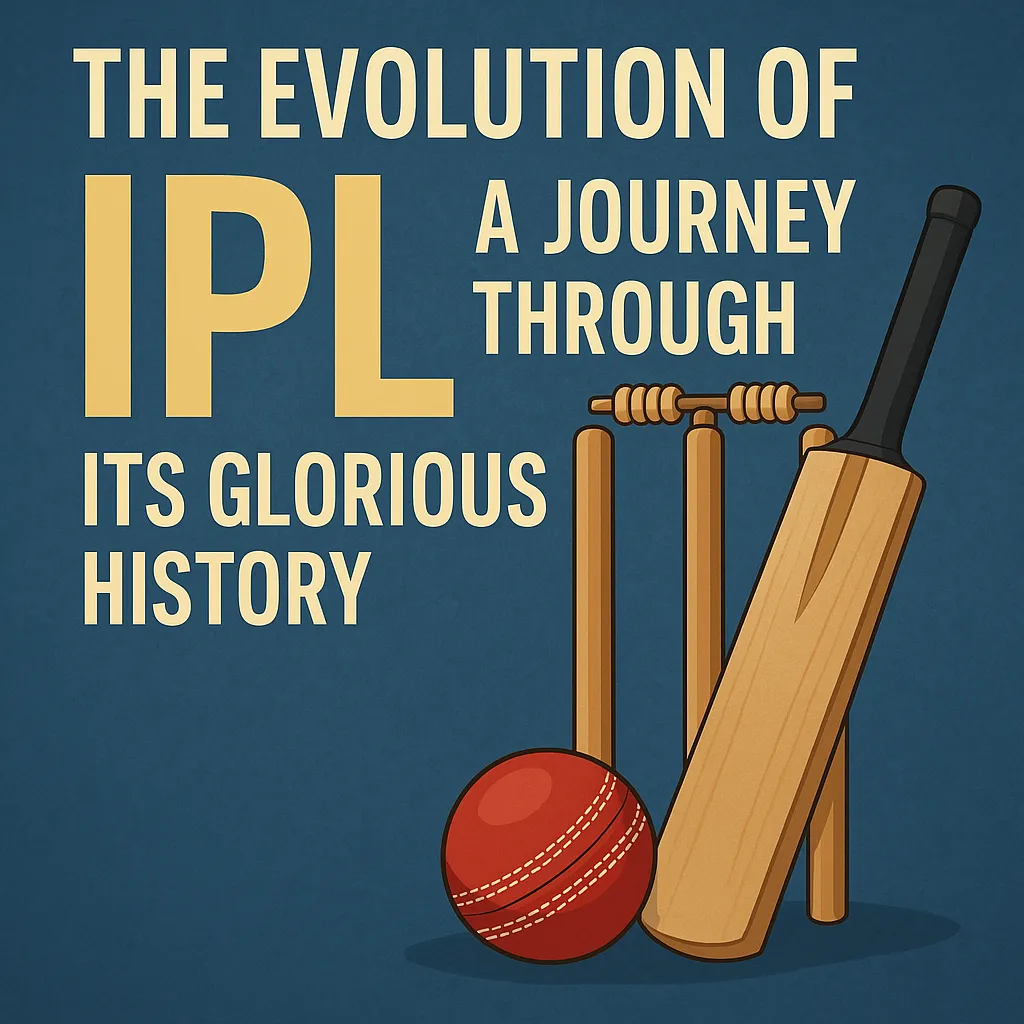The Indian Premier League (IPL) has transformed cricket into a global entertainment spectacle, blending sports and entertainment in an unprecedented way. Since its inception in 2008, IPL has revolutionized the cricketing landscape, making it one of the most-watched and financially lucrative leagues in the world. Let’s take a journey through its remarkable history and evolution.
The Birth of IPL: A Revolutionary Concept
The Board of Control for Cricket in India (BCCI) introduced the IPL in 2008 as a franchise-based T20 league inspired by European football leagues. The tournament aimed to bring together international and domestic players, promoting a fast-paced and exciting format of cricket.
- Lalit Modi, the brainchild behind IPL, envisioned a league that combined sports, glamour, and business.
- The first IPL auction saw franchises bidding for top cricketers, making headlines globally.
- The opening match in 2008 witnessed Brendon McCullum’s 158 for Kolkata Knight Riders*, setting the tone for the league’s high-octane nature.
Expansion and Growth: IPL’s Early Success
The first few seasons of the IPL showcased thrilling matches, intense rivalries, and the rise of young Indian talent. The league quickly became a commercial success, attracting massive sponsorships, television rights deals, and international viewership.
- The IPL expanded from 8 teams to 10 teams over the years.
- Teams like Mumbai Indians (MI) and Chennai Super Kings (CSK) emerged as dominant forces.
- New records, breathtaking performances, and last-ball thrillers became synonymous with IPL.
- Introduction of strategic timeouts, player retention, and mega auctions added more excitement.
Challenges and Controversies
Despite its success, IPL has faced several controversies that rocked the cricketing world:
- Spot-fixing scandal (2013) led to suspensions of teams like CSK and Rajasthan Royals.
- Ownership disputes and financial irregularities caused turmoil.
- Player auctions and retention policies often sparked debates among fans and franchises.
However, IPL’s brand value remained unaffected, and the league continued to grow stronger with every season.
The Rise of Young Talent and Impact on Indian Cricket
One of IPL’s biggest contributions has been nurturing young Indian talent. Several players made their way into the national team through stellar IPL performances.
- Virat Kohli, Jasprit Bumrah, Hardik Pandya, and Rishabh Pant owe much of their growth to IPL.
- IPL provided a platform for domestic players to play alongside international legends like MS Dhoni, AB de Villiers, Chris Gayle, and Rohit Sharma.
- Franchise-based training, world-class coaching, and exposure to high-pressure matches have improved the quality of Indian cricket.
The IPL Brand: Financial and Global Expansion
Over the years, IPL has grown into one of the richest sporting leagues worldwide. With massive broadcasting deals and sponsorships, it has become a billion-dollar industry.
- The 2023 IPL media rights were sold for $6.2 billion.
- Sponsorship deals with brands like Vivo, Tata, Dream11, and Star Sports boosted IPL’s commercial success.
- IPL has expanded to the Middle East and USA, with talks of future international editions.
Impact of COVID-19 and Adaptation
The COVID-19 pandemic in 2020 disrupted global sports, including the IPL. However, the league adapted efficiently:
- The 2020 IPL season was hosted in UAE due to restrictions in India.
- Bio-secure bubbles, empty stadiums, and virtual fan engagement were introduced.
- Despite challenges, IPL maintained its viewership and financial stability.
New Innovations and Future of IPL
IPL continues to evolve with new technologies and fan engagement strategies:
- Introduction of Impact Player Rule to add tactical depth to matches.
- Advanced analytics, wearable technology, and AI-driven insights are changing the way teams strategize.
- Women’s Premier League (WPL) was launched in 2023, following IPL’s successful model.
- Expansion of IPL teams and global franchise leagues like SA20 and ILT20 are in discussion.
With its massive fan base, financial backing, and innovation-driven approach, IPL’s future looks brighter than ever.
People Also Ask: 10 FAQs About IPL History and Evolution
1. When was IPL started?
IPL was launched in 2008 by the Board of Control for Cricket in India (BCCI).
2. Who won the first IPL season?
Rajasthan Royals won the inaugural IPL season in 2008, defeating Chennai Super Kings in the final.
3. Which team has won the most IPL titles?
As of now, Mumbai Indians (5 titles) and Chennai Super Kings (5 titles) share the record for the most IPL trophies.
4. Who scored the first IPL century?
Brendon McCullum scored the first-ever IPL century (158*) in the opening match of IPL 2008 for Kolkata Knight Riders.
5. How much does an IPL team cost?
The cost of IPL teams varies, but franchises like Lucknow Super Giants and Gujarat Titans were sold for over $700 million each.
6. What is the highest individual score in IPL history?
Chris Gayle’s 175 for RCB in 2013* remains the highest individual score in IPL history.
7. Has IPL ever been played outside India?
Yes, IPL has been played in South Africa (2009) and UAE (2014, 2020, and part of 2021) due to various reasons.
8. Who is the most successful IPL captain?
MS Dhoni is regarded as the most successful IPL captain, leading Chennai Super Kings to multiple titles.
9. What is the brand value of IPL?
As of 2023, IPL’s estimated brand value is over $11 billion, making it one of the richest sports leagues globally.
10. How does the IPL auction work?
IPL franchises bid for players in a high-stakes auction, where teams have a salary cap and strategize based on their squad requirements.
Final Thoughts
The Indian Premier League (IPL) has redefined cricket, making it more dynamic, entertaining, and financially rewarding. With its growing popularity, technological advancements, and global expansion, IPL is set to scale new heights in the coming years. Whether you’re a cricket fan or a business enthusiast, IPL’s journey is nothing short of legendary!
